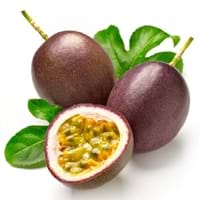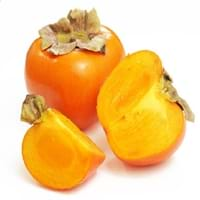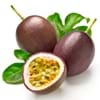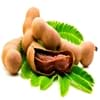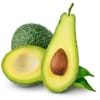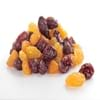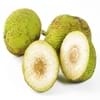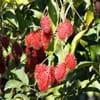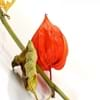Health Benefits
Asthma treatment, Heart care, Regulates Blood Sugar, Muscle pain relief, Reduces nervous tension
Anti-oxidant properties, Beneficial in curing fever, Cancer prevention, Heart care, Reduces nervous tension
General Benefits
Boosts immune system, Controls blood pressure, Digestive aid, Fights against infections, Helps in weight loss
Anti-inflammatory properties, Boosts immune system, Controls blood pressure, Digestive aid, Eye care, Fights against infections, Helps in weight loss, Improves blood circulation
Skin Benefits
Anti-aging benefits, Skin revitalization
Anti-aging benefits, Brightens and lightens complexion, Reduces wrinkles
Hair Benefits
Protects hair
Good conditioner, Promotes longer and healthier hair, Treatment of dandruff
Allergy Symptoms
Anaphylaxis, Breathing difficulty, Decrease in blood pressure, Dizziness, Skin rash, Swelling of face, Swelling of mouth, tongue or lips
Abdominal pains, Anaphylaxis, Inflammation
Side Effects
Stressed heart, Nausea, Vomiting, Possibly unsafe during pregnancy
Affects blood glucose levels, Decrease in blood sugar levels, Coagulation
Best Time to Eat
As a snack in the late afternoon, Don't consume at night and before bed, Morning time (before lunch), Strictly avoid empty stomach
Along with meal, As a snack in the late afternoon, Don't consume at night and before bed, Eat the fresh ones, avoid mixing with any other foods, don't eat after meal.
Vitamin A (Retinol)
Not Available
Vitamin B1 (Thiamin)
Not Available
Vitamin B2 (Riboflavin)
Not Available
Vitamin B3 (Niacin)
Not Available
Vitamin B6 (Pyridoxin)
Not Available
Vitamin B9 (Folic acid)
Not Available
Vitamin C (Ascorbic Acid)
Vitamin E (Tocopherole)
Not Available
Vitamin K (Phyllochinone)
Not Available
Lutein+Zeaxanthin
Not Available
Calories in Fresh Fruit with Peel
Not Available
Calories in Fresh Fruit without Peel
Not Available
Calories in Frozen Form
Not Available
Not Available
Calories in Canned Form
Not Available
Type
Tropical
Berry, Tree fruit
Season
All seasons
Autumn, Winter
Varieties
Australian Purple, Common Purple, Kapoho Selection, Pratt Hybrid, University Selection No. B-74, Waimanalo Selection and Yee Selection
Early Golden, John Rick, Miller, Woolbright and Ennis
Color
Purple, Yellow
Orange, Red, Yellow
Inside Color
Yellow
Yellow
Origin
Argentina, Brazil, Paraguay
Eastern United States
Grows on
Not Available
Trees
Soil Type
Sandy loam
Sandy loam, Well-drained
Climatic Conditions
Frost free, Sunny, Warm
Can tolerate wide range of climates, Sunny
Facts about
- Passion fruit tree can grow up to 20 feet in a year.
- More than 200 species of passion fruit are found near Amazon river.
- Oil extracted from its seeds is used in various cosmetics.
- It is said that formation of seeds inside the persimmon fruit shows what type of winter is coming(type of snow).
- There are about 2000 varieties of this fruit.
- The American persimmon has another name 'Possumwood'.
Top Producer
Brazil
China
Other Countries
Colombia, Ecuador, Indonesia, Kenya, Peru
Azerbaijan, Brazil, Costa Rica, Japan, Korea, Pakistan
Top Importer
Brazil
United States of America
Top Exporter
Ecuador
United States of America
Botanical Name
Passiflora edulis
Diospyros virginiana
Synonym
Passiflora edulis f. edulis or Passiflora edulis f. flavicarpa
Not Available
Subkingdom
Tracheobionta
Tracheobionta
Division
Magnoliophyta
Magnoliophyta
Class
Magnoliopsida
Magnoliopsida
Subclass
Dillenhidae
Dillenhidae
Order
Malpighiales
Ericales
Family
Passifloraceae
Ebenaceae
Genus
Passiflora
Diospyros
Species
P. edulis
D. virginiana
Generic Group
Passion Flower
Not Available
Difference Between Passionfruit and American Persimmon
We might think that Passionfruit and American Persimmon are similar with respect to nutritional value and health benefits. But the nutrient content of both fruits is different. Passionfruit and American Persimmon Facts such as their taste, shape, color, and size are also distinct. The difference between Passionfruit and American Persimmon is explained here.
The amount of calories in 100 gm of fresh Passionfruit and American Persimmon with peel is Not Available and 127.00 kcal and the amount of calories without peel is 97.00 kcal and Not Available respectively. Thus, Passionfruit and American Persimmon belong to and category.These fruits might or might not differ with respect to their scientific classification. The order of Passionfruit and American Persimmon is Malpighiales and Ericales respectively. Passionfruit belongs to Passifloraceae family and American Persimmon belongs to Ebenaceae family. Passionfruit belongs to Passiflora genus of P. edulis species and American Persimmon belongs to Diospyros genus of D. virginiana species. Beings plants, both fruits belong to Plantae Kingdom.
